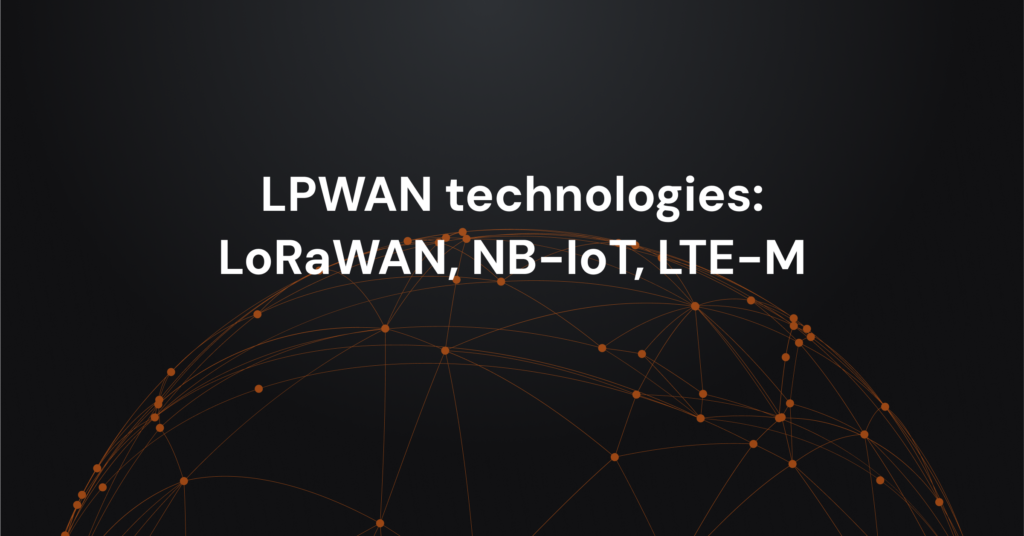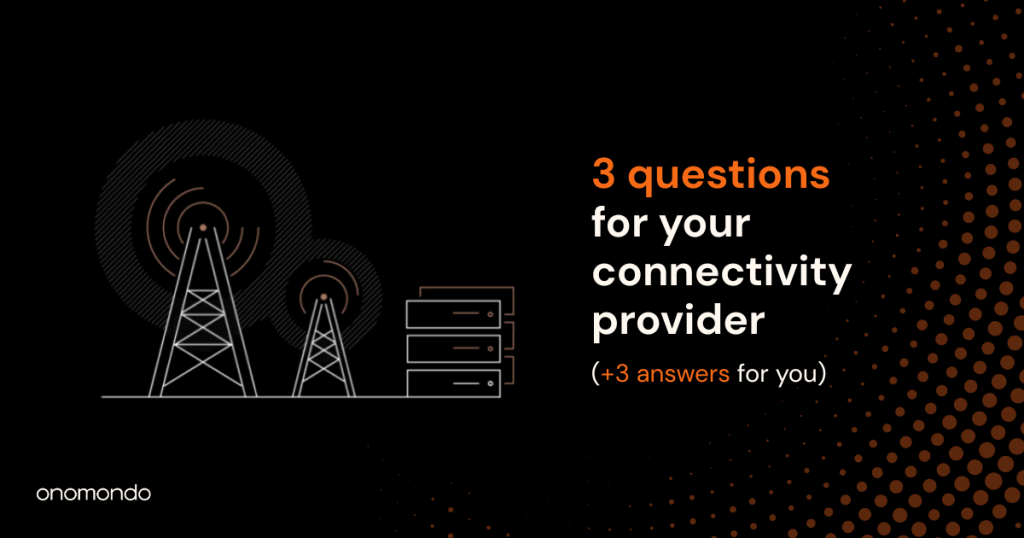Choosing between cellular connectivity and another low-power option like LoRaWAN for your IoT deployment can be confusing. Each option has its advantages and disadvantages depending on the use case.
But is there a way to get the best of both worlds? IoT devices can maximize the advantages of two connectivity options, switching between them as needed — for example, some devices may combine LoRaWAN and cellular IoT connectivity in the same device.
In this article, we’ll take a look at LoRaWAN and low-power cellular IoT technologies, highlighting key features and advantages for various use cases. Then, we’ll consider a dual approach — specifically, the advantages of combining LoRaWAN with cellular fallback.
Jump to topic
What’s the difference between LoRaWAN and cellular IoT?
While both network technologies have ecosystems made for IoT, some of the biggest differences are how connection is established — whether or not IoT SIMs are needed or what kind of infrastructure is needed to support coverage. Let’s take a closer look at both.
What is LoRaWAN?
LoRaWAN stands for long range wide area network, which can be set up on either a private or a public network. It was developed in 2009 specifically for IoT applications.
Simply put, LoRaWAN is a non-cellular network technology that enables battery-powered devices to connect and communicate data without SIMs, only a LoRaWAN radio and a unique ID. LoRaWAN is not to be confused with LoRa, which is the protocol stack’s physical (PHY) layer technology that transmits data via radio signal.
LoRaWAN’s hallmarks are low power consumption and a long range, enabling device communication across vast distances. It’s capable of supporting large deployments and operates on unlicensed frequency bands, which can cut down on connectivity costs. The key advantages of LoRaWAN include:
- Minimal power consumption
- Long range (10 km or more in rural areas)
- End-to-end data security
- Scalability
What is cellular IoT?
Cellular IoT is a much broader term, referring to a growing number of communications protocols designed to enable communication between IoT devices.
Cellular IoT connectivity takes advantage of the networks and infrastructure that are already in place to serve consumer devices such as smartphones and tablets — including the familiar 2G/3G, 4G, LTE, and 5G.
There are also cellular technologies designed specifically with low-power IoT devices in mind, including LTE-M, NB-IoT, and LTE cat 1 bis. A few key advantages of cellular IoT connectivity include:
- Ample global coverage due to existing infrastructure
- Scalability
- Dependability
- Built-in security
- Flexibility depending on a device’s power and data needs
Now, let’s define the terms most closely associated with cellular IoT low-power device deployments and look at what these technologies bring to the table.
What are LPWAN: LoRaWAN, LTE-M, and NB-IoT

LPWAN stands for Low-Power Wide-Area Network. LPWAN is a general term for technology that connects low-power devices across long distances, allowing them to report data at low bit rates.
LoRaWAN falls under the umbrella of LPWAN, as do cellular IoT standards such as LTE-M and NB-IoT.
LTE-M and NB-IoT
Both LTE-M and NB-IoT were created specifically for IoT applications. They run under licensed spectrums and both have a Power Saving Mode (PSM) and use Discontinuous Reception (eDRX) to allow devices to “sleep” and save power when not actively sending or receiving data.
LTE-M’s data transfer speeds are higher than NB-IoT’s capabilities, but NB-IoT has a longer range and works well deep indoors. For a deeper dive into the topic, this guide presents both LTE-based LPWAN technologies side-by-side.
Ultimately, both technologies allow IoT devices to operate with minimal power consumption compared to 2G, 3G, and 4G networks — and because they use existing cellular infrastructure, coverage is quite good across many global regions. Use our free coverage map for a preview of what LTE-M and NB-IoT coverages are available globally.
Comparing LoRaWAN, LTE-M, and NB-IoT
LoRaWAN’s strengths include the ability to deploy large numbers of modules at a low cost that are able to conserve battery power by communicating in periodic bursts. Cellular connectivity is generally priced differently from a hardware perspective, but it’s able to achieve comparatively higher bandwidth data transfers.
From a coverage perspective, LoRaWAN is limited to regions where base stations and infrastructure have been built out. For devices on the move — such as a telematics sensor on a moving vehicle — LTE-M will be a more dependable choice. But for stationary use cases, such as soil monitoring in an agricultural setting, NB-IoT or LoRaWAN works just as well.







